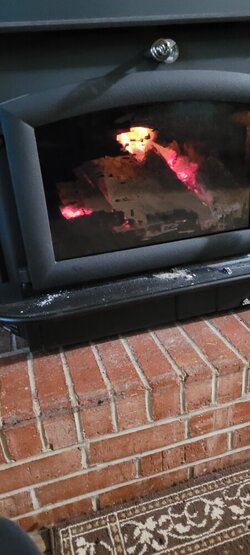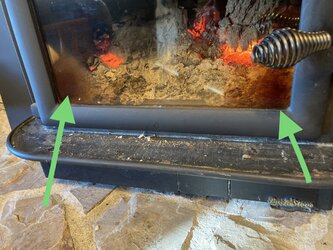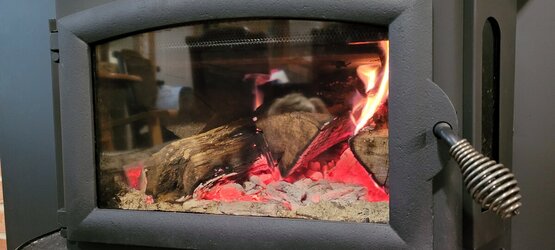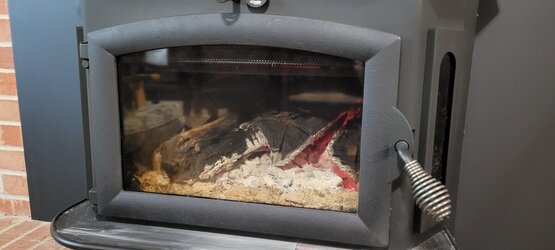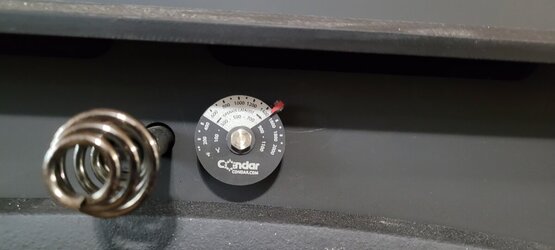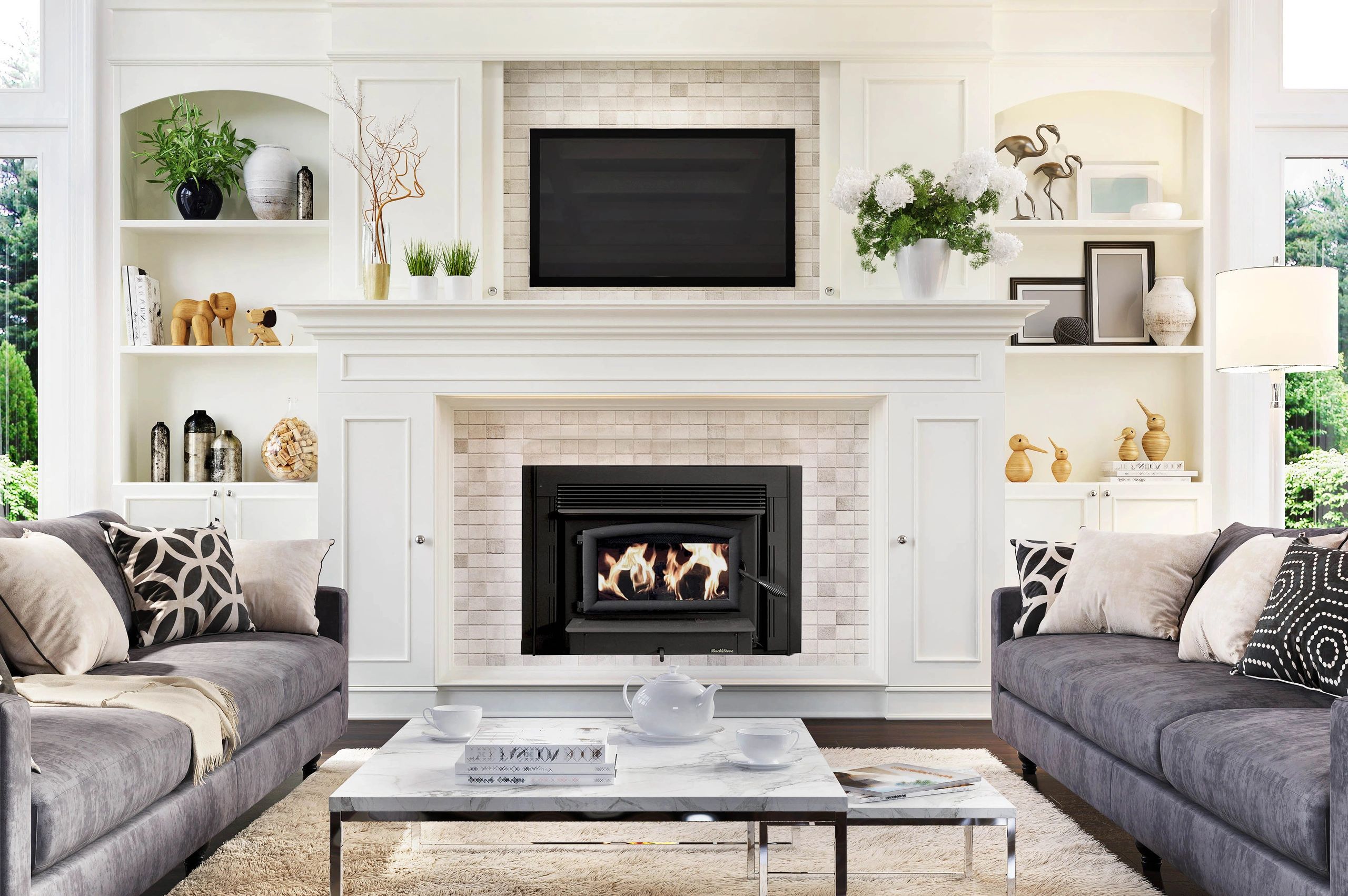Hello,
My husband and I recently purchased this model wood fireplace insert. We have used it for about 1 week as our only heat source and it's working fantastic heating our 2200sf home! We are very pleased with the heat output.
The issue is, the first day we used it the glass door immediately blackened up. We realized this was due to our improper use of the bypass damper which we have since learned should be open during the heat up phase and closed when the catalyst is active. There was a LOT of smoke that day trying to figure things out.
Yesterday, while the stove was cool I scraped all the black off the glass with a razor blade and had it cleaned up. It burned fairly well and clear for a few hours but by the end of the day the glass was black again. Any time we shut the air intake down to control the heat there would be a lot of smoke in the chamber. The entire inside of the Insert is also coated in black creosote.
I re-scraped the black off again this morning and same story by the end of today.
We have aimed to keep the heat of the combuster right around 1200 all day so we don't feel that it has insufficient heat. Why is it doing this and not burning off the black build up?
A few ideas of things we were doing wrong were that could be a problem are a) we did load logs side to side vs front to back. We have changed that this afternoon.
B) we have been adding a log here and there and opening the door more often..is this an issue and causing excess smoke? How much should we load at a time? C) we were closing the bypass damper immediately after refueling (it says to do this in the manual) but I've read elsewhere that you should leave it open for awhile after reloading. So we aren't sure which is the better way...
Also, our wood is over 1 year old hard wood (mainly red oak).
Any ideas of what we are doing wrong? I realize some is just trial and error to figure things out but this isn't an issue I see most people having so we aren't sure what we are doing wrong!
Would anyone share in detail what your method is?
Picture 1 is yesterday afternoons fire after I cleaned the glass and picture 2 is tonight. The cat temp currently reads 1500°.
Thanks!
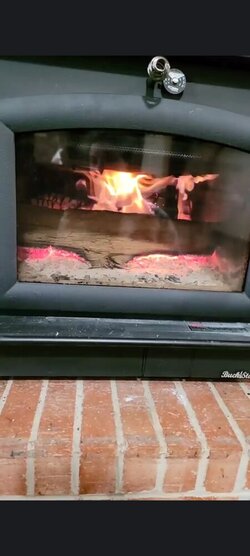
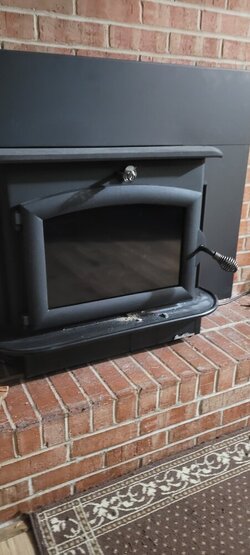
My husband and I recently purchased this model wood fireplace insert. We have used it for about 1 week as our only heat source and it's working fantastic heating our 2200sf home! We are very pleased with the heat output.
The issue is, the first day we used it the glass door immediately blackened up. We realized this was due to our improper use of the bypass damper which we have since learned should be open during the heat up phase and closed when the catalyst is active. There was a LOT of smoke that day trying to figure things out.
Yesterday, while the stove was cool I scraped all the black off the glass with a razor blade and had it cleaned up. It burned fairly well and clear for a few hours but by the end of the day the glass was black again. Any time we shut the air intake down to control the heat there would be a lot of smoke in the chamber. The entire inside of the Insert is also coated in black creosote.
I re-scraped the black off again this morning and same story by the end of today.
We have aimed to keep the heat of the combuster right around 1200 all day so we don't feel that it has insufficient heat. Why is it doing this and not burning off the black build up?
A few ideas of things we were doing wrong were that could be a problem are a) we did load logs side to side vs front to back. We have changed that this afternoon.
B) we have been adding a log here and there and opening the door more often..is this an issue and causing excess smoke? How much should we load at a time? C) we were closing the bypass damper immediately after refueling (it says to do this in the manual) but I've read elsewhere that you should leave it open for awhile after reloading. So we aren't sure which is the better way...
Also, our wood is over 1 year old hard wood (mainly red oak).
Any ideas of what we are doing wrong? I realize some is just trial and error to figure things out but this isn't an issue I see most people having so we aren't sure what we are doing wrong!
Would anyone share in detail what your method is?
Picture 1 is yesterday afternoons fire after I cleaned the glass and picture 2 is tonight. The cat temp currently reads 1500°.
Thanks!


Last edited:


